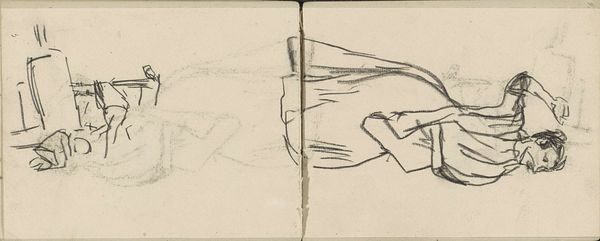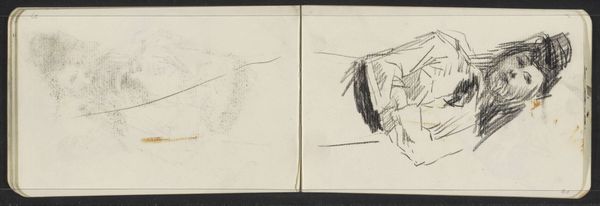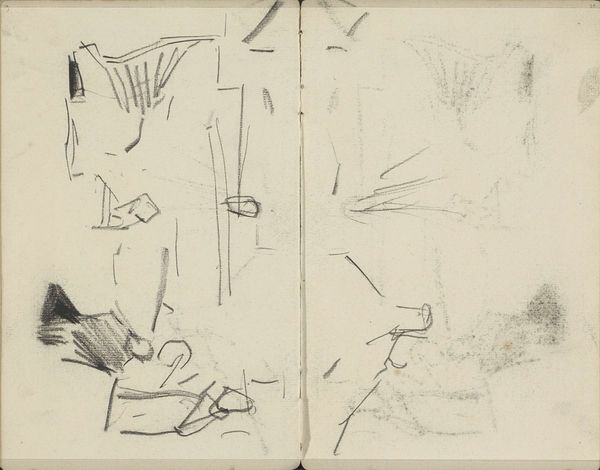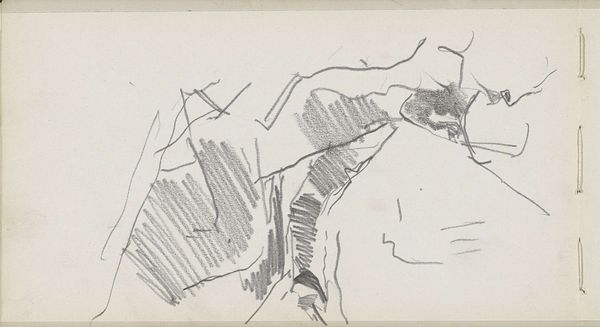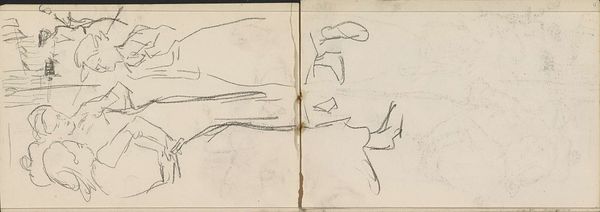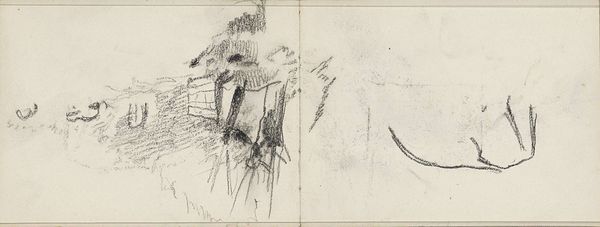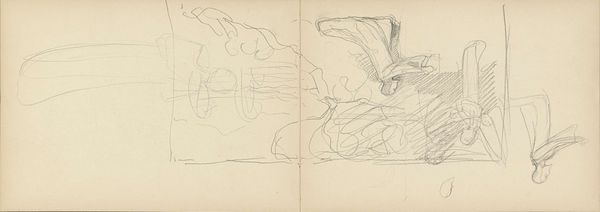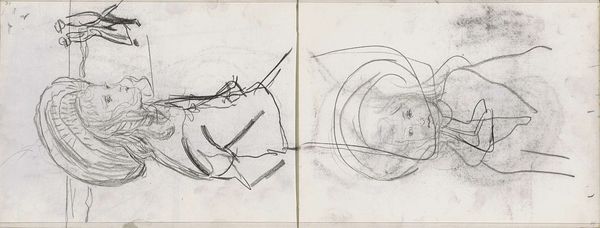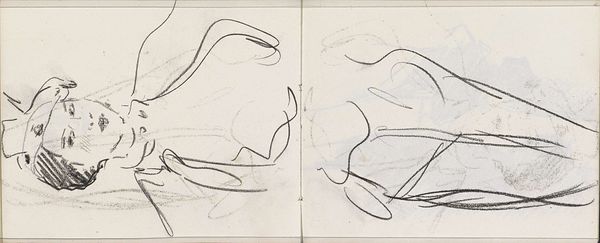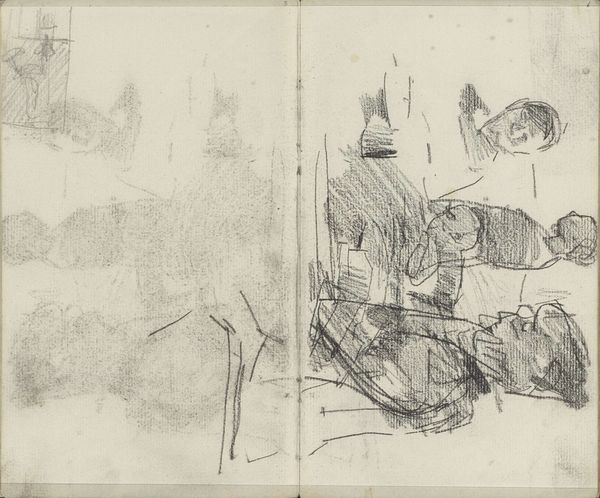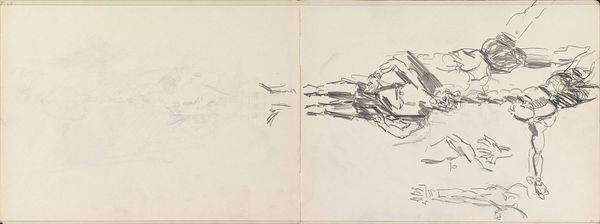
Copyright: Rijks Museum: Open Domain
Curator: Welcome. We are looking at "Dienstmeid met muts" by Isaac Israels, likely created sometime between 1875 and 1934. It’s currently housed here at the Rijksmuseum. It appears to be executed using pen and pencil. What's your initial read? Editor: My first impression is one of quiet introspection. The downward gaze and the subtle shading create a feeling of both weariness and dignity. It's remarkably intimate. Curator: It's interesting to consider the circumstances under which this drawing may have been made. The rapid strokes of both pen and pencil suggest perhaps a study, an attempt to capture a fleeting moment within the laborious environment that domestic work entails. I'm immediately curious about the paper itself – its texture, its provenance. What was its cost relative to the commission? These elements, although often unseen, were fundamental. Editor: I am drawn to the iconography of the maid’s cap. In art, head coverings can signify any number of symbolic ideas, such as status, social roles, or modesty. The intricate details here denote more than simple domesticity, offering us insight to the social symbolism related to domestic workers of the period. Curator: And perhaps that intricate lacework wasn't Israels’s focus. Look at how he uses line weight to quickly differentiate between the sitter’s facial features, compared with the relative blur and mass of the dress, which has an illustrative patterning but is otherwise quickly described. I wonder, was the sitter a paid model or a household member? How does the answer to that inform how we read class relations at play in the drawing’s very creation? Editor: Indeed. The slight upward tilt of her face carries hints of melancholy and also hope. What stories reside in this simple pen and pencil portrait? The light in her eyes catches memories, cultural and emotional burdens as much as artistic study. Curator: Thank you. By considering process and social context, in addition to those captivating images and symbols, hopefully we’ve offered new angles for contemplating this particular work, as well as portraiture more generally. Editor: Agreed, a rich layering of art and social and historical meaning indeed!
Comments
No comments
Be the first to comment and join the conversation on the ultimate creative platform.


